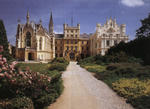
When, in the middle of the 13
th century, the Liechtenstein family acquired their first land in Lednice, they suddenly owned as yet unused meadows and swamps, annually flooded by the Dyje river. By the time when, seven hundred years later, the Liechtensteins were leaving the estate, the swamps had been reclaimed and a singular complex of structures large and small had been erected between Lednice and the neighbouring Valtice, like gems fitted in a huge mosaic of rivers, canals and parks. The Lednice park which seamlessly merges with the surrounding landscape has been nicknamed
'Garden of Europe' and
'Garden of Paradise'.
The Lednice-Valtice complex is a perfect example of a 'cultural landscape', or landscape which has been changed by humans into an original work of art. When possible, visitors are advised to take bikes with them because the Lednice-Valtice complex is so large that it can hardly be visited in one day, even on a bike. In 1666-1669, Karl Eusebius of Liechtenstein had an Early Baroque residence constructed in Lednice, having moved here from Valtice. He also had the Orangerie built and the park landscaped, with scores of Romantic structures added later and popping up into view here and there, among them
the Hardtmuth minaret of 1792-1802, and the artificial ruins of John's Castle of 1807. The appeal of the complex is further enhanced by the Lednice fishponds which have become an ideal nesting place for water-fowl and have been included on the list of intemational omithological reserves. The last major changes at the chateau were made in the 19
th century, when the garden wing was rebuilt in. The French Empire style and a
tropical glasshouse was added at the eastern side of the chateau. The interiors were adapted in the neo-Gothic style. The Lednice Chateau is one of the finest examples of High Romanticism in this country.
Lednice is one of the most frequented places in the country thanks to its historical monuments of world importance. The first written references to Lednice appeared in 1222. In Latin texts, Lednice was called YSGRUBI, while in German EISGRUB. At first a rather small village, Lednice became a small town in 1582. The transformation of landscape in the region of Lednice and Valtice
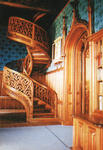
took place over the period of several centuries. It was commenced by the Lichtenstein family who owned Lednice since the mid-13
th century. The Lichtenstein acquired more then hundred years later and both estates became the center of their already extensive family property. The prestige of the whole domain was enhanced when Charles of Lichtenstein was elevated to the peerage.
Him important position at the imperial court was reflected in a more costly furnishing of the Lednice residence.
The first composition to alter the landscape were newly established alleys, as well as game preserves with star in their rides. This system which was based on ideas of Renaissance architects has been preserved up to this day.
After 1805, the structure of the estate was influenced by
the English park model which is reflected in the area around
the Lednice ponds as well.
The Lednice Chateau clearly emphasises the size and unique character of the Lednice park. Centuries of reconstruction and alternations left the chateau in the Neo-Romantic Gothic style of the 19
th century. The reconstruction drew on designs by G. Wingelmuller and was completed by J. Heindrich.
A greenhouse designed by an Englishman, P. H. Devlen, adjoins the eastern part of the chateau. The large iron construction of the palm house provided shelter for various exotic plants.
The Baroque part of the horse stables which were built in the north-western part of the premises as early as 1688-96 is the work of B. Fischer of Erlach. Interior furnishing have changed, too. Walls and ceilings were paneled in wood while some of the walls covered with wallpaper in different shades of blue, red and green.
The first and second floors of the chateau house an exhibition of the National Agricultural Museum Prague.
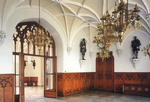
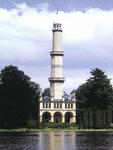
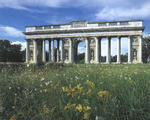
 Guide
Guide 





